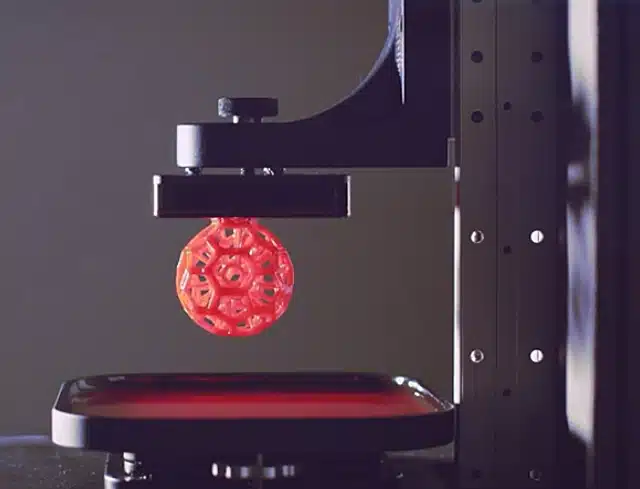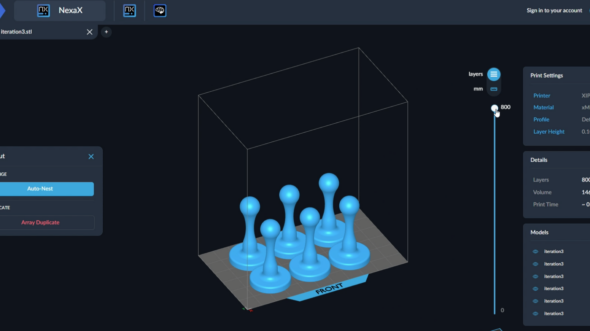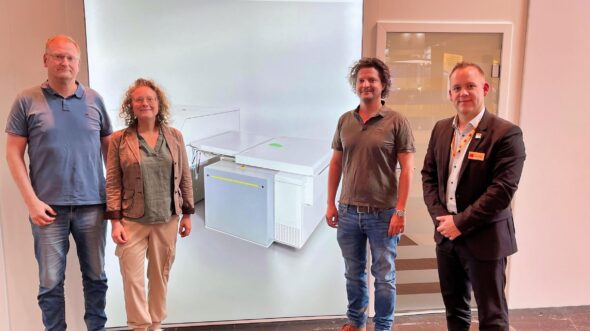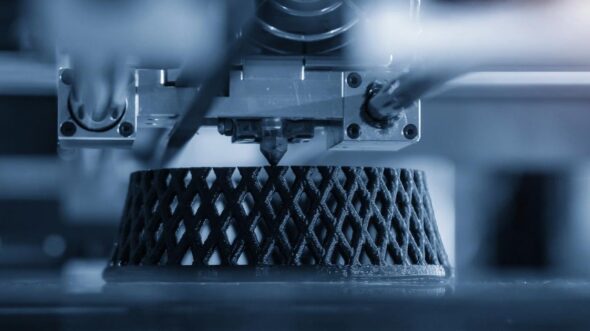
3D printing, also known as additive manufacturing, is revolutionizing the way we create objects by allowing the construction of three-dimensional items from digital files. This transformative technology builds objects layer by layer, using materials such as plastics, metals, and resins. The flexibility and precision of 3D printing have opened up new possibilities in various industries, from aerospace and automotive to healthcare and consumer goods.
Different 3D printing processes and techniques are crucial because they cater to specific needs and applications. Each method has its unique strengths, whether it’s producing detailed prototypes, functional parts, or large-scale models. Understanding these processes helps in selecting the right technology for a given project, ensuring efficiency, cost-effectiveness, and the desired quality.
This article aims to provide detailed insights into various 3D printing methods, exploring how each technique works, its advantages, and its typical applications. By the end, you’ll have a comprehensive understanding of the diverse world of 3D printing technologies.
3D printers vary widely based on the size, detail, and scope of a project. Selecting the appropriate type of 3D printer is essential for achieving the best results in any given application. The table below outlines the different types of 3D printers and their specific characteristics.
| 3D Printer Type | Detail Level | Size Range | Material Compatibility | Typical Applications |
|---|---|---|---|---|
| Fused Deposition Modeling (FDM) | Moderate | Small to Large | Plastics (ABS, PLA) | Prototyping, hobbyist projects, educational models |
| Stereolithography (SLA) | High | Small to Medium | Resins | Dental models, jewelry, intricate prototypes |
| Digital Light Processing (DLP) | High | Small to Medium | Resins | High-detail prototypes, small parts |
| Continuous Liquid Interface Production (CLIP) | Very High | Small to Medium | Resins | Medical devices, high-precision components |
| Material Jetting | Very High | Small to Medium | Photopolymers | Detailed prototypes, complex geometries |
| Binder Jetting | Moderate | Small to Large | Powders (metal, sand, ceramics) | Full-color models, casting patterns |
| Selective Laser Sintering (SLS) | High | Medium to Large | Nylon, other thermoplastics | Functional prototypes, end-use parts |
| Multi-Jet Fusion (MJF) | High | Medium to Large | Nylon, TPU | Functional parts, detailed prototypes |
| Direct Metal Laser Sintering (DMLS) | Very High | Small to Medium | Metals (aluminum, titanium) | Aerospace components, medical implants |
| Sheet Lamination | Moderate | Medium to Large | Paper, metal foil | Large-scale models, prototypes |
| Directed Energy Deposition | High | Medium to Large | Metals | Repair and maintenance, large metal parts |
By understanding these variations and selecting the appropriate 3D printer, businesses and individuals can optimize their production processes, achieve higher quality results, and ensure cost-effectiveness in their projects.
Definition and Overview
Fused Deposition Modeling (FDM) is one of the most widely used 3D printing technologies, particularly popular in both professional and hobbyist circles. It operates by extruding thermoplastic material layer-by-layer to build up a 3D object. FDM is also known by the term Fused Filament Fabrication (FFF).
Common Applications
Process Explanation
FDM is praised for its simplicity, versatility, and cost-effectiveness. It is particularly advantageous for rapid prototyping and small-scale production, offering a balance of speed, material variety, and ease of use. By understanding its processes and applications, users can leverage FDM technology to meet various design and manufacturing needs effectively.
Definition and Overview
Stereolithography (SLA) is a pioneering 3D printing technology that uses a laser to cure liquid resin into hardened plastic, layer by layer. It was the first 3D printing method developed and remains one of the most precise techniques available. SLA is renowned for its ability to produce high-resolution objects with smooth surfaces and intricate details, making it a popular choice for various applications requiring fine precision.
Best Suited for Intricate Details and Fast Prototyping
Process Explanation
SLA technology’s ability to produce high-quality, detailed parts quickly makes it invaluable for industries that require precise models and prototypes. Its applications span from medical and dental industries to engineering and product design, showcasing its versatility and effectiveness in creating detailed, functional parts.
Definition and Overview
Digital Light Processing (DLP) is a 3D printing technology that uses digital light projection to cure photopolymer resin layer by layer. Similar to Stereolithography (SLA), DLP creates high-resolution, detailed objects, but it does so at a faster rate due to its unique light source. The method is particularly well-suited for applications that require precision and fine details, such as dental models, jewelry, and intricate prototypes.
Historical Significance
Process Explanation
DLP’s speed and precision make it a valuable technology for creating high-quality, detailed parts quickly and efficiently. Its application spans various industries, from medical and dental fields to complex engineering and product design projects.
Definition and Overview
Continuous Liquid Interface Production (CLIP) is an advanced 3D printing technology that significantly enhances the speed and precision of producing high-quality parts. Developed by Carbon, CLIP uses a unique approach to photopolymerization, termed Vat Photopolymerization, which involves the continuous curing of a liquid resin into a solid object using light and oxygen. This process allows for the creation of complex, high-resolution parts with exceptional mechanical properties and surface finish.
Fast Process Using Vat Photopolymerisation
CLIP is known for its rapid production capabilities, making it one of the fastest 3D printing methods available. The technology is particularly beneficial for industries requiring quick turnaround times and high throughput, such as automotive, aerospace, medical, and consumer goods.
Process Explanation
CLIP’s ability to produce high-resolution parts quickly and efficiently makes it a game-changer in the 3D printing industry. Its continuous production method not only speeds up the printing process but also improves the surface finish and mechanical properties of the printed objects, positioning CLIP as a preferred choice for industrial and commercial applications.
Definition and Overview
Selective Laser Sintering (SLS) is a popular 3D printing technique known for its ability to create highly detailed and durable parts. SLS uses a high-power laser to sinter powdered material, binding it together to create a solid structure. This process is particularly well-suited for complex geometries and functional prototypes, making it a preferred choice in various industries including aerospace, automotive, and healthcare.
Process Explanation
Applications
SLS is renowned for its versatility and is used in a wide range of applications, particularly where complex designs and robust material properties are required:
SLS’s ability to produce strong, detailed, and complex parts makes it a vital tool in modern manufacturing, offering significant advantages in terms of design freedom, material versatility, and overall production efficiency.
Definition and Overview
Multi-Jet Fusion (MJF) is an advanced 3D printing technology developed by HP. It stands out for its ability to produce high-quality, functional parts with fine details at a faster rate compared to traditional 3D printing methods. MJF is particularly noted for its excellent mechanical properties and surface finish, making it ideal for both prototyping and small-scale production.
Process Explanation
Applications
MJF’s capability to rapidly produce detailed, functional parts with superior mechanical properties makes it a powerful tool in the landscape of 3D printing technologies.

3D Printing Processes
In summary, the diverse array of 3D printing processes—from Fused Deposition Modeling (FDM) and Stereolithography (SLA) to Digital Light Processing (DLP) and Multi-Jet Fusion (MJF)—demonstrates the versatile nature of additive manufacturing. Each technique offers unique advantages tailored to specific applications, whether it’s the high-speed production of MJF, the intricate detail capabilities of SLA, or the durability of parts produced by Selective Laser Sintering (SLS).
Selecting the appropriate 3D printing technique is crucial for achieving optimal results. Factors such as material requirements, desired resolution, production speed, and the complexity of the design all play a pivotal role in this decision-making process. By understanding the strengths and limitations of each method, businesses and individuals can effectively leverage 3D printing to enhance their prototyping, production, and innovation efforts.
Looking ahead, the future of 3D printing technology promises exciting advancements. Continued research and development are expected to bring forth even faster, more precise, and cost-effective printing methods. Innovations in materials, improved automation, and the integration of AI and machine learning will further expand the capabilities and applications of 3D printing, solidifying its position as a transformative technology in manufacturing and beyond.
For further in-depth understanding, the listed references provide comprehensive insights into the various 3D printing technologies and their applications.
Are you ready to revolutionize your business with cutting-edge solutions? Connect with 3DX Additive Manufacturing and discover how we can transform your unique business challenges into opportunities for innovation and growth. Whether it’s customizing products, reducing production costs, or accelerating your time to market, 3DX offers a versatile and efficient path forward. Don’t let traditional manufacturing constraints limit your business potential. Explore the endless possibilities with 3D printing today and take the first step towards a more innovative, agile, and competitive future. Embrace the change, explore 3D printing, and redefine what’s possible in your industry!
Dynagraph remains strategically committed to its legacy business, resilient but cautious. As part of its enduring efforts, it has embarked on a diversification strategy, to expand into new markets and experiment with new products and services.
Find out moreFounded in 1952, Dynagraph would play a pivotal role in the preservation and dissemination of printing in Lebanon and the Middle East region. Over the next years the company would solidify its reputation as the influential leader in the field of printing in the Arab world.
Find out more© Dynagraph Holding Ltd. All rights reserved.




